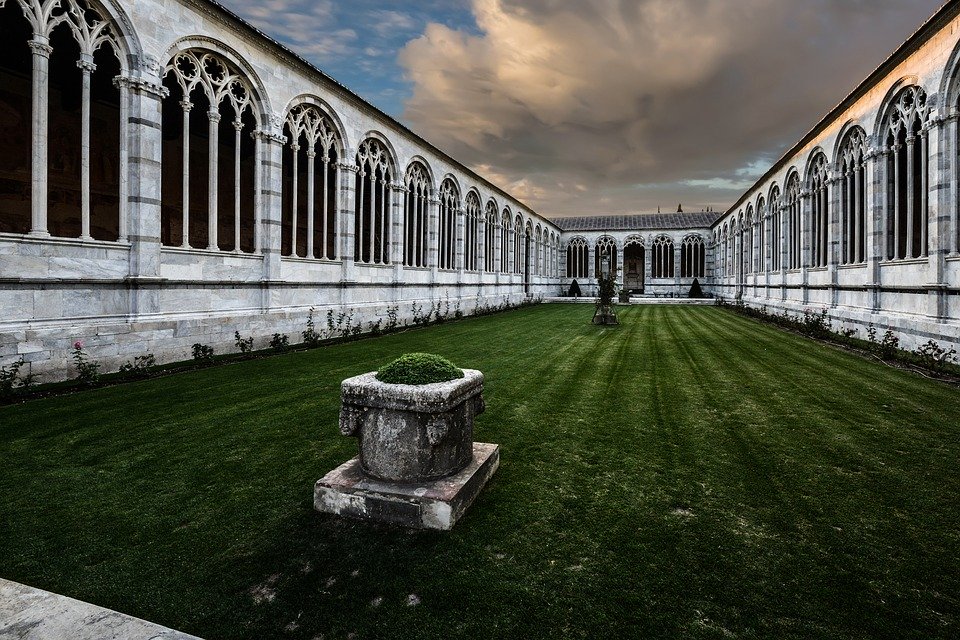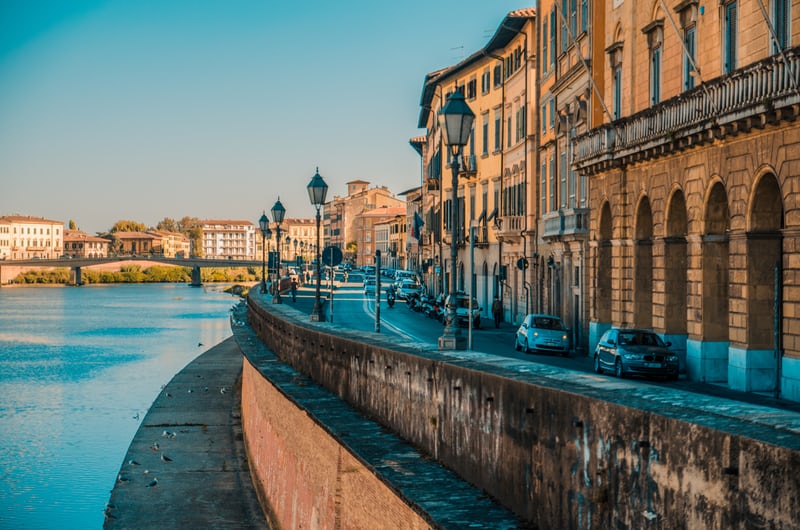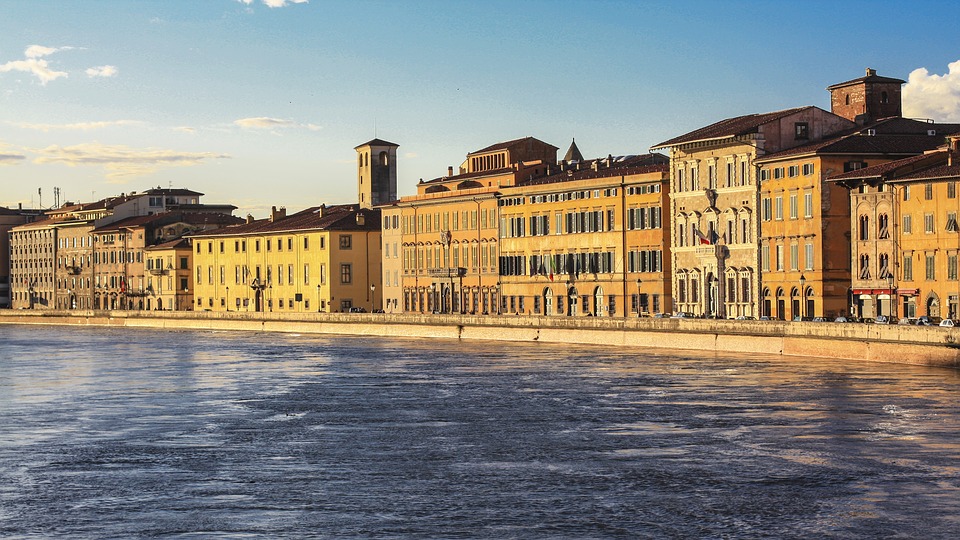WHAT TO VISIT IN PISA
The first monument that comes to mind when thinking of Pisa is the famous Leaning Tower, however there are several other things that are worth to visit in Pisa.
Pisa is characterised by a remarkable group of buildings in Piazza del Duomo, the so-called Piazza dei Miracoli (Square of Miracles). This piazza contains the Duomo, the baptistery, the Leaning Tower and the camposanto (cemetery).
Both the cathedral and the baptistery are built of white marble with strips of black in the Pisan Romanesque style, which features colonnades and the decorative use of pointed arches.

The cathedral has a nave with double-vaulted aisles and transepts with single-vaulted ones, and a cupola at the intersection of the two axes and inside there is a splendid decagonal pulpit carved in white marble by Giovanni Pisano. It also features a bronze door built by Bonanno Pisano, which shows biblical scenes.
The circular baptistery, begun in 1152 but only completed in the 14th century and the interior contains a wonderful hexagonal pulpit completed in 1260 by Nicola Pisano.
The Leaning Tower of Pisa, begun in 1174 and completed in the 14th century, is also round and is constructed throughout of white marble, inlaid on the exterior with coloured marbles.

The camposanto’s marble buildings, erected from 1278 in the Italian Gothic style by Giovanni di Simone, contained important frescoes by various 14th– and 15th-century Tuscan artists, notably Benozzo Gozzoli.
Pisa is also renoun for a number of old churches that include San Pierino (11th–12th century); San Frediano and San Sepolcro (both 12th century); San Nicola, with a four-storied tower of about 1250 Santa Caterina (13–14th century); San Michele in Borgo, with a fine 14th-century facade; and Santa Maria della Spina.
FREE TIME

Pisa’s city centre offers a wide range of meeting places such as bars, pubs, restaurants, pizzerias and discos. Usually the night life revolves around two mains squares: Piazza Garibaldi and Piazza Vettovaglie, where students may enjoy the Italian “aperitivo” (happy hour). From the month of June there are also some characteristic bars on the shores of the Arno river called Arno Vivo, right in front of the Department of Economics, and Argine e Margine.
Given the position of the city, public transportation and in order to have a great experience, I suggest everybody to have a stroll in some locations in Tuscany, do not miss:
- Firenze (Florence) among the monuments the students can see there are: the Cathedral of Santa Maria del Fiore, the Uffizi’s Gallery, Ponte Vecchio (a medieval bridge where many of the artisanal jewellers can be found), the Basilica di Santa Croce and many others masterpieces.
- Lucca, where students can go for a walk on “Le Mura” which are defensive walls that show Roman, Medieval and Renaissance constructions.
- Siena, which still today has the structure of a medieval village with narrow streets and aristocratic buildings, and where tourists can visit Piazza del Campo – the square where the Palio takes place – and the Duomo.
- Last but not least, there are also some characteristic medieval towns that are worth seeing, such as Volterra, San Gimignano and Vinci.
Other than these locations I also suggest some beach locations which students can visit easily with public transportation, such as:
- Le Cinque Terre, this location consists of 5 towns, Riomaggiore, Manarola, Corniglia, Monterosso e Vernazza, in the cliffs of the Riviera di Levante, situated in the neighboring region of Liguria. One of the main attractions is the path carved in the cliffs between the villages called Via dell’Amore (Path of Love).
- Tirrenia is the nearest beach location from Pisa, it’s accessible by bus or car and it takes about 10 to 20 minutes to get there.
- La Versilia is a very popular location during the summer as it’s seen as the heart of the night life. It consists of different cities such as Viareggio, Marina di Pietrasanta and Forte dei Marmi.
During the year several events take place in the city, so don’t forget to check out these following dates:

- La Luminara (16th June), on the eve of the Patron Saint day, all the buildings facades on the Arno river are illuminated by candles and nightlights. The celebration reaches its peek at midnight with a firework show.
- Palio of San Ranieri (17th June), in the afternoon four boats representing the colours of the most ancient district of the city take part in a regatta on the river Arno.
- The Gioco del Ponte (Battle of the Bridge) takes place the last Sunday of June, it’s played on Ponte di Mezzo between the teams of Tramontana and Mezzogionro.
- Saint Ubaldo’s feast, which is a flower market along the river Arno at Le Piagge.
- Pisa Book Festival takes place mid October, it consists of reading, publishing workshops and discussion take place and food is available.
- Dolcemente Pisa takes place end October, it’s a famous festival dedicated to desserts.
- Pisa Vini takes place in Novemeber and it’s an important exhibition dedicated to wines.
HOUSING
Usually incoming students share a flat with other Italian or international colleagues. During the welcome week the IRO will help you with this search but mostly it will be your buddy who will assist you in finding flats or rooms to be shared. Prices of the rooms are about 250-350 Euro per month. Generally, these prices do not include utilities or the expenses for the upkeep and management of the common property. In most cases landlords require a deposit of one- or two-months’ rent, which will be given back at the end of the contract.

